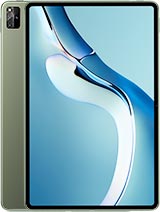Huawei HarmonyOS - what is it and is it here to stay? By GSMArena Official
Everyone Huawei announced their new operating system, harmony, OS 2.0, along with their new Huawei watch 3, and the mate pad 2 pro harmony. Os is Huawei's answer to android and the company will be updating more than 100 devices to the new OS over the next year. But what exactly? Does this mean for users? I'm Angie for gs, marina, and this is what's new, with harmony, OS, 2.0 and Huawei's latest devices. Interestingly, harmony OS seems to refer to the new device ecosystem, the actual new operating system on their phones and the software that all Huawei devices will be running. Even if these three things are very different. I'm going to focus on the tablet version of harmony OS, because the phone version is only available in China at the moment, and the two should be pretty similar.
The OS is heavily based on android, both as codebase and as UX, but it allows the company to break free of the US limitations. Android OS is an open source system, even though it's created and maintained by google and everyone is free to develop their own versions of it. As long as they don't insist on integrating google services, which Huawei clearly isn't Huawei has used this as an opportunity to create a more seamless interconnection between their devices, phones, smart TVs, watches and even laptops will all work together smoothly. This may sound similar to apple's HomeKit and Samsung SmartThings, but Huawei wants to make this interconnection even easier and on a broader scale. If you open up harmony, OS 2.0 on a phone or a tablet like the new matepad2 pro you will see, it looks a lot like emu 11. You have your apps at the bottom, and you can make two types of folders depending on what you need.
There are regular folders and then smart folders, which are larger and show the icons of the apps inside swipe down on the top left of your device, and you'll see a standard looking notification panel. However, if you swipe down from the top right, you'll see the harmony OS control panel that has clearly taken some inspiration from iOS. There are toggles for things like the flashlight and autorotation. According to Huawei. Here you can create super devices.
These are interconnected pieces of hardware that work together on the harmony network through your phone. Let's say that your phone and your tablet are linked from then on. Huawei will consider this to be one super device and from then on in the task center you'll see tasks from both devices. You can then move a task from your phone to your tablet and vice versa and control. What application you want to run where, since Huawei is launching the new mate pad 2 and mate pad 2 pro that support their second generation and pencil, you might use the pencil to draw directly on one of the tablets and then switch over the art to your phone and upload it to social media.
From there the control panel serves as a unified portal for users to check devices and control them from a distance without having to rummage around in settings. For example, you can tap on the music widget to play a song and choose which streaming app. You want to play your music, but without actually opening it up. Then you can use the same widget to select which headphone or speaker should play the song, or you can use one of their watches, like the Huawei watch 3 to take a picture from your phone through your watch without actually having to go into your phone. The watch also features travel apps that can hold your boarding pass information sports apps.
So you can check in on your favorite teams and smart remote control for things like your lights at home, so there will likely be some level of control. Panel implementation in the watch too. Huawei hopes to make it easier for developers to deploy the same code on different hardware by using the distributed application network provided by the new OS behind the scenes. Huawei has also optimized their software so that, even if the ROM is almost full, there won't be the slowdown that we're used to seeing on other phones. That should mean that most apps and functions launch faster and continue to launch faster through the lifespan of the device.
In short, it's very promising to see all this interconnectivity on a platform that isn't Samsung's or apples it'll be unlikely for it to completely take off in the west, considering how much we've come to rely on Google's applications for all sorts of everyday tasks, but even if you don't get a phone with it, it's likely that western consumers, like you and me, will use some of their other new devices and run into the new OS like their smartwatches or tablets. It's clear that Huawei has invested a lot of effort into not just creating a new OS, but an entire functional ecosystem that stands as an alternative to Samsung's and apples. There's a lot to explore here, and it'll be interesting to see just how much Huawei ends up developing it for now, we'll probably get a taste with their new Huawei watch 3 and their new tablets. Most importantly, it's great to see all this competition, because when big companies compete, it's us the users that end up winning in the end. Thank you for watching everyone stay safe, and I'll, see you guys next time you.
Source : GSMArena Official

























